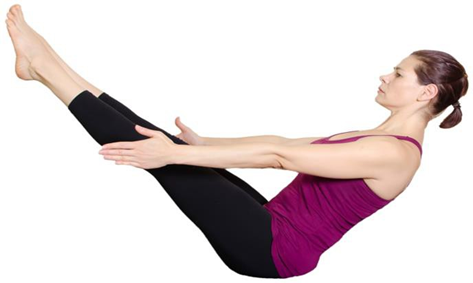In today's fast-paced and demanding world, stress has become an unwelcome companion for many. The good news is that yoga offers a powerful antidote to stress, providing a holistic approach to finding balance and inner peace. By incorporating yogic practices into our daily routine, we can effectively manage and relieve stress while nurturing our overall well-being. In this article, we will explore how yoga helps in relieving stress and suggest five yogic practices that you can embrace to find tranquility in the midst of a chaotic world.
1. Pranayama (Breath Control): Pranayama, or breath control, is a fundamental aspect of yoga that helps regulate the breath and calm the mind. By consciously deepening and slowing down the breath, we activate the parasympathetic nervous system, which induces a state of relaxation. Simple techniques like diaphragmatic breathing, alternate nostril breathing (Nadi Shodhana), and deep belly breathing can instantly soothe the nervous system and reduce stress levels.
2. Yoga Asanas (Physical Postures): Yoga asanas, or physical postures, are renowned for their ability to release tension and promote physical and mental well-being. Asanas stretch and strengthen the body, allowing for the release of physical and emotional stress. Practices such as Child's Pose (Balasana), Standing Forward Fold (Uttanasana), and Corpse Pose (Savasana) help calm the nervous system, relax the body, and quiet the mind, fostering a sense of tranquility.
3. Yoga Nidra (Yogic Sleep): Yoga Nidra, often referred to as yogic sleep, is a guided meditation practice that induces deep relaxation and releases stress. By systematically rotating awareness throughout the body and entering a state of conscious relaxation, Yoga Nidra helps alleviate anxiety and tension. Regular practice of this technique has been shown to enhance overall well-being and promote restful sleep, making it an effective tool for stress management.
4. Mindfulness and Meditation: Mindfulness and meditation are integral components of yoga that cultivate present-moment awareness and mental clarity. By focusing attention on the breath, sensations, or a chosen object of meditation, we train the mind to let go of stressful thoughts and find inner calm. Mindful meditation practices like loving-kindness meditation, gratitude meditation, and body scan meditation can help reduce stress levels, improve emotional resilience, and promote a positive outlook on life.
5. Yoga Philosophy and Lifestyle: Yoga extends beyond the physical practice and encompasses a philosophy and lifestyle that promote harmony and balance. Embracing the principles of non-violence (ahimsa), truthfulness (satya), and contentment (santosha) can help alleviate stress by fostering compassion, authenticity, and acceptance. By adopting a yogic lifestyle that includes conscious eating, adequate rest, and self-care practices, we create a nurturing environment for stress relief and overall well-being.
Stress has become an almost unavoidable aspect of modern life, but through the practice of yoga, we can find solace and regain balance. By incorporating breath control, yoga asanas, Yoga Nidra, mindfulness, and adopting a yogic philosophy and lifestyle, we equip ourselves with powerful tools to effectively manage stress. Embrace these yogic practices, and let the transformative power of yoga guide you on a journey towards inner peace, well-being, and a stress-free life.


















